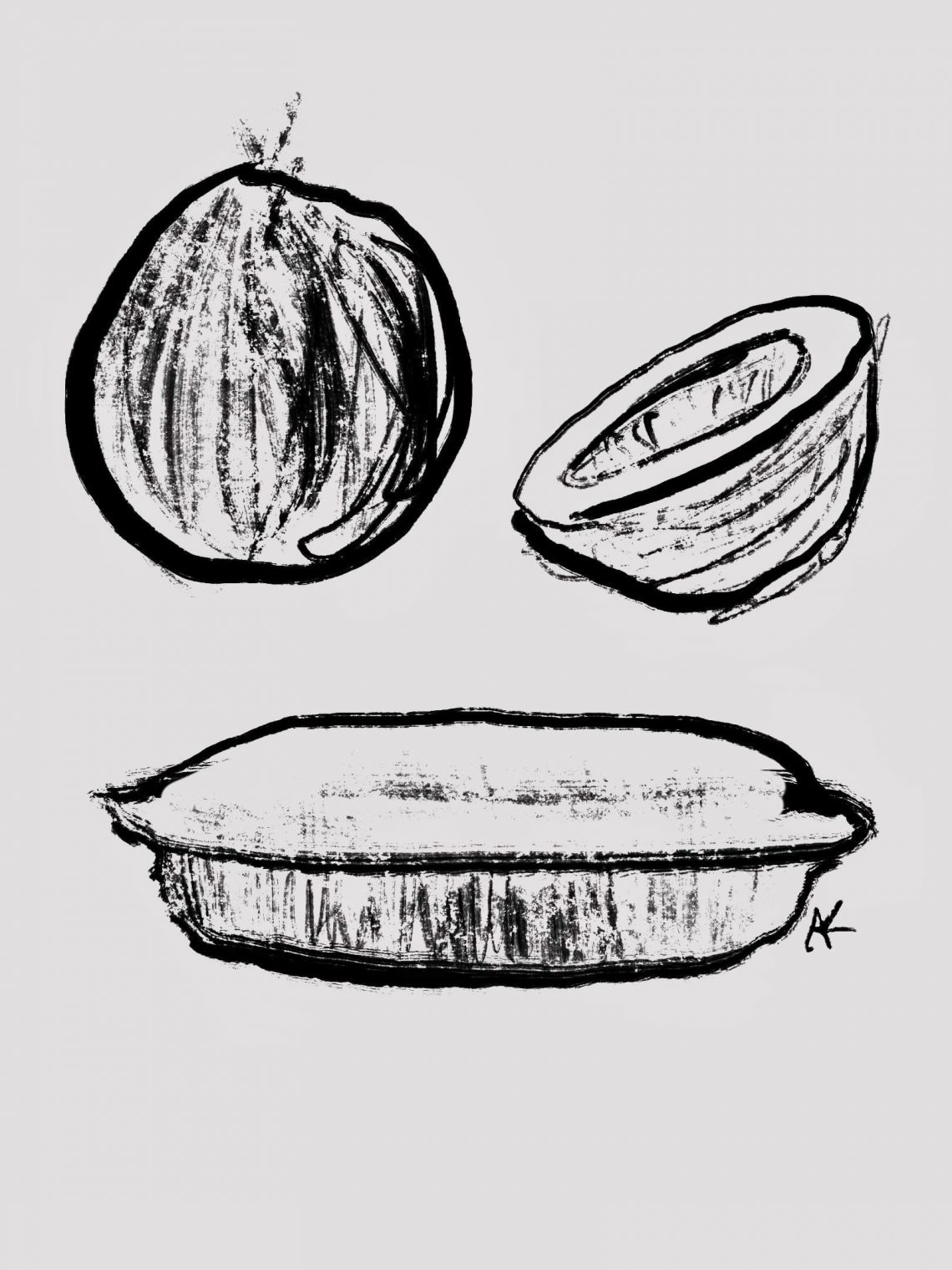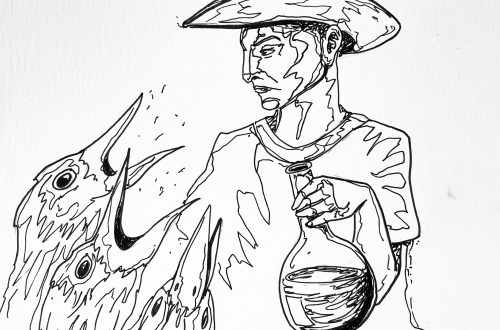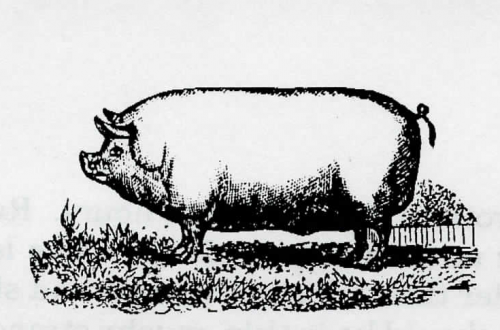by Sumitra Mattai
Sumitra’s essay is featured in episode 46 of The Dirty Spoon Radio Hour.
The Coconut Pie That Stole Thanksgiving
I was in my early teens when I began baking at Thanksgiving, creating apple, pecan and blueberry pies for my extended family. For many years, we celebrated the holiday at my mother’s house with my aunts, uncles and cousins. My mother and her sisters had all migrated from Guyana, South America, moving to Canada, England and Jamaica, before finally settling within a five-mile radius of one another in central New Jersey. We were a small but sturdy network in a foreign land. My mother, a Hindu vegetarian, didn’t just tolerate the turkey at the epicenter of the meal; in the ultimate gesture of assimilation, she prepared it for the rest of us. As busy as she was hosting, cooking and cleaning, she didn’t protest when I assumed pie duty.
I had discovered baking during a brief stint as a Girl Scout in the third grade. I remember standing on a stepstool at the kitchen counter reading the instructions for an apple pie from the Girl Scout handbook. I’d grown up watching my mother cook, but this was one of the first times I had ever followed a recipe. As my mother helped me to assemble the ingredients, they struck me as being disparate and unrelated – the powdery white flour, the pale dollops of vegetable shortening, the ice water and sliced apples. How could all these elements amount to something whole?
Pulling the finished pie out of the oven an hour later in that warm, cinnamon-scented finale, I felt as awed as a scientist in a laboratory. The alchemy of the transformation was addictive. In a few years, I was baking my way through my mother’s cookbooks, most of which were secondhand and wore the patina of many years of experimentation.
As a chubby kid with a penchant for sweets, I justified my intake of cookies if I made them myself. Even as I tried to diet and lose weight, I couldn’t help but return to the comfort of the oven, and the gratification of baking. There was no manual for the emotional turmoil of adolescence and my parents’ divorce. But I found great relief in the predictable format of a recipe. No matter what was going on, if I followed this set of instructions, there would be something delicious to eat when the timer went off. In darker moments, I ate alone, hunched and binging. But more often, baking was a way to connect with friends and family.
As our household’s resident baker, Thanksgiving was a much-anticipated stage. That said, I can admit that not all of my creations were showstoppers; there were a few stiff crusts and watery fruit pies along the way. But I was proud of my efforts and endeavored to perfect the recipes year after year. I was especially delighted by the ceremonial cutting of the pies while everyone eagerly looked on, choosing which ones they wanted to try first. One of my uncles always took a sliver of each kind heaped with vanilla ice cream. As everyone ate, I loved listening to the chatter around the table.
“Did you try the blueberry? It’s amazing!”
“Have the pecan, it’s worth the calories!”
Tradition shifted in my twenties, as my mother, sisters and I began to invite our friends for the holiday meal, including my boyfriend who would later become my husband, and several friends from college. During those years, I made two of each pie so that our guests could enjoy slices for breakfast as well as dessert over the four-day weekend.
By the time my boyfriend and I moved in together, I was reading food blogs, collecting cookbooks, and obsessed with the Barefoot Contessa. In that era of my young adulthood, I was regularly experimenting in my own kitchen, from red velvet cake made with actual beets to a triple berry bundt cake I still make for my mother’s birthday every year. I didn’t have the touch for fancy decorating or the patience for pastry. My specialty was and still is comfort food, one-bowl wonders that are both a creative outlet and a form of stress relief.
Even now, as I write, there is a loaf of pumpkin bread cooling on my countertop. The room is filled with the scent of cinnamon, ginger, and cardamom, my secret ingredient, and one I might use in a future pumpkin pie.
After my husband and I got married in 2014, our Thanksgiving tradition evolved to include my in-laws, who flew up from Nassau, Bahamas. My husband had long since taken over the making of the turkey, which he brined in a cooler the night before. My mother-in-law baked macaroni and cheese in the largest glass dish in our cupboards. My father-in-law, like my late grandfather before him, sat at the head of the table, drinking my mother’s homemade chai, telling stories and playing checkers.
At our first Thanksgiving together, my husband decided to make his grandmother’s coconut pie. He was more of a cook than a baker, but this dish was a family favorite, and he was determined to make it just like her. While he had watched his grandmother bake the pie in Nassau many times, he had to call her for the specifics – when to add the vanilla, how long to beat the egg yolks. Over the phone, however, she was reluctant to share her process. A quiet but wry matriarch, I imagined her sitting on the floral printed sofa covered with plastic in her living room, every surface filled with framed photographs of her children and grandchildren. It probably amused her to give her second eldest grandson a hard time. Typical of their dynamic, he played dumb and cracked jokes until he managed to wheedle the prized recipe.
Unlike American coconut cream pie, which called for a package of dried, sweetened coconut flakes, the Bahamian version required an actual coconut. My husband bought two from the local grocery store, in case one had spoiled during its long journey from the tropics to suburban New Jersey. There was no way of knowing if the flesh was good until he broke them open on the driveway with hard thuds, his hands cold from the November chill. Once the coconuts were split into rough shards, he spent the better part of an hour using the box grater, nicking his fingers when the pieces got too small. With a wooden spoon, he folded the fluffy, snow-white flakes into a creamy mix of condensed milk, egg yolks, vanilla, and melted butter. When the pie came out of the oven, it looked like a pale yellow moon.
Our first Thanksgiving with my in-laws was special. It was their first taste of this all-American holiday – served, ironically, by a team of immigrants. There was fresh excitement around my mother’s dining room table, which was extended with two extra leaves to accommodate the group.
“Break my plate!” my father-in-law joked as we served him. I soon learned that the meaning of this Bahamian phrase was to load up his plate with so much food that the plate would actually break – an exaggeration to be sure, but not impossible in this meal-centric holiday.
Dinner was a success, but the ceremonial pie cutting went differently than it had in previous years. Instead of being excited to try all the options, our guests were only hungry for the coconut pie. Though my in-laws had for many years enjoyed my banana bread, carrot cake, and blueberry scones, they had no interest in my pies, which languished on the table, almost intact, save for a pity slice here and there. The coconut pie transported the whole table to the islands, and everyone – even my own mother – agreed it was the best pie they had ever tasted. As I listened to their praise, I tried to hide my embarrassment by having a slice. But each bite lodged in my throat. My ego was too bruised to enjoy its creamy texture, and the sweet-but-not-too-sweet, coconut-rich flavor.
As rejected as I felt, I couldn’t relay my disappointment to my husband, not wanting to seem petty and immature. But as we prepared for the next Thanksgiving, I braced for another humiliating scene. My husband doubled up on coconut pies, and I still baked a few. But my mood was sour, accompanied by passive-aggressive muttering under my breath about how “no one wanted my pies anyway.”
My husband tried to reason with me. “Are you really upset about pie right now?”
To which I replied, “Of course not!” And continued huffing around the kitchen.
This charade continued for a few years. With the addition of our own young children, I was relieved to be excused from the bulk of the holiday baking. Coconut pie continued to reign supreme, and I was too exhausted to care. My contribution to the dessert menu diminished from a full repertoire to a single obligatory apple crisp.
Then, in September of 2022, our lives forever changed with the unexpected passing of my father-in-law. Deeply saddened by this sudden loss, I couldn’t fathom going through the motions of another Thanksgiving. As November approached, I imagined us weeping over plates of turkey, sweet potatoes, and green beans and decided we needed a new plan. That fall, in honor of my father-in-law, who loved to travel, we broke tradition and flew to Paris. It was the first time in my life I wasn’t at home for the holiday, the first time I wasn’t cooking, baking, and cleaning all day. With my husband, my mother, my mother-in-law, brothers-in-law, and our children, we ate our Thanksgiving meal at an Indian restaurant around the corner from our Airbnb in the Marais. Instead of pie, we feasted on French pastries for dessert. The menu and circumstances were vastly different from previous years, but we were that much more grateful to be together.
Less than a year later, my husband’s grandmother, the originator of the infamous coconut pie, passed away. In the wake of this loss, I’m thankful that my husband has learned her recipe; it’s one of the few ways we can keep her memory alive. Mother of thirteen children, grandmother, and great-grandmother to many, her work ethic and culinary mastery are embodied in this dish, which may well survive for generations. The cycle was as complete and enduring as the shape of the pie itself, that perfect, pale yellow moon.
Original artwork by Alex Knighten
About the Author
 Sumitra Mattai is a writer and textile designer based in New York City. She holds a BFA in Textile Design from the Rhode Island School of Design and an MFA in Creative Writing from The New School. Her essays on family, food, and culture have been published widely. For more information, please visit her website, www.sumitramattai.com, or find her on Instagram @sumitramattai.
Sumitra Mattai is a writer and textile designer based in New York City. She holds a BFA in Textile Design from the Rhode Island School of Design and an MFA in Creative Writing from The New School. Her essays on family, food, and culture have been published widely. For more information, please visit her website, www.sumitramattai.com, or find her on Instagram @sumitramattai.






